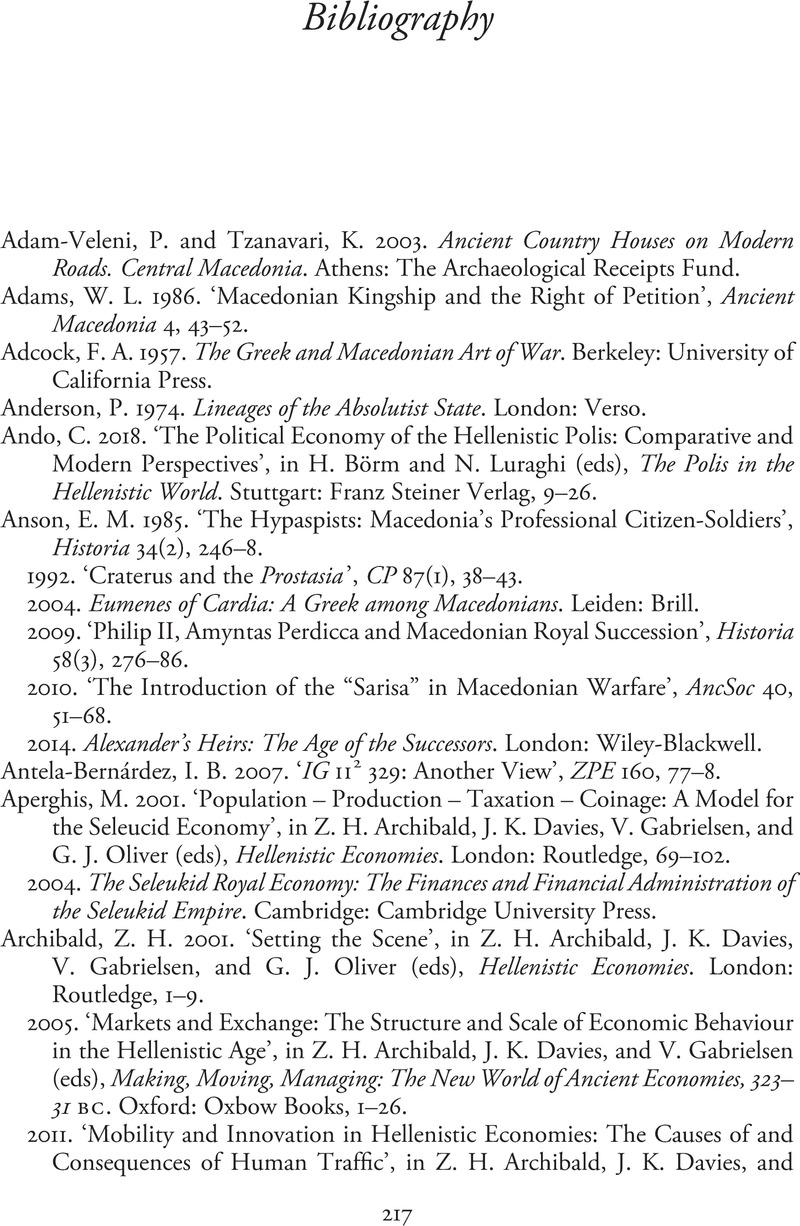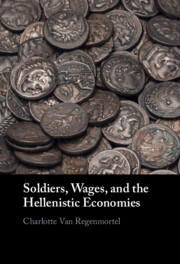Book contents
- Soldiers, Wages, and the Hellenistic Economies
- Soldiers, Wages, and the Hellenistic Economies
- Copyright page
- Dedication
- Contents
- List of Tables
- Acknowledgements
- Note on Transliteration and Translation
- Chronology
- Abbreviations
- List of Maps
- Maps
- Introduction
- Chapter 1 Contextualizing Paid Military Service
- Chapter 2 The Concept of Wage Labour
- Chapter 3 Enlistment and Terms of Service
- Chapter 4 Forms of Remuneration and Standards of Living
- Chapter 5 The Military Labour Market
- Chapter 6 Military Wage Labour and the Hellenistic Economies
- Conclusion
- Epigraphic Dossier
- Bibliography
- Index
- References
Bibliography
Published online by Cambridge University Press: 21 May 2024
- Soldiers, Wages, and the Hellenistic Economies
- Soldiers, Wages, and the Hellenistic Economies
- Copyright page
- Dedication
- Contents
- List of Tables
- Acknowledgements
- Note on Transliteration and Translation
- Chronology
- Abbreviations
- List of Maps
- Maps
- Introduction
- Chapter 1 Contextualizing Paid Military Service
- Chapter 2 The Concept of Wage Labour
- Chapter 3 Enlistment and Terms of Service
- Chapter 4 Forms of Remuneration and Standards of Living
- Chapter 5 The Military Labour Market
- Chapter 6 Military Wage Labour and the Hellenistic Economies
- Conclusion
- Epigraphic Dossier
- Bibliography
- Index
- References
Summary

- Type
- Chapter
- Information
- Soldiers, Wages, and the Hellenistic Economies , pp. 217 - 243Publisher: Cambridge University PressPrint publication year: 2024

